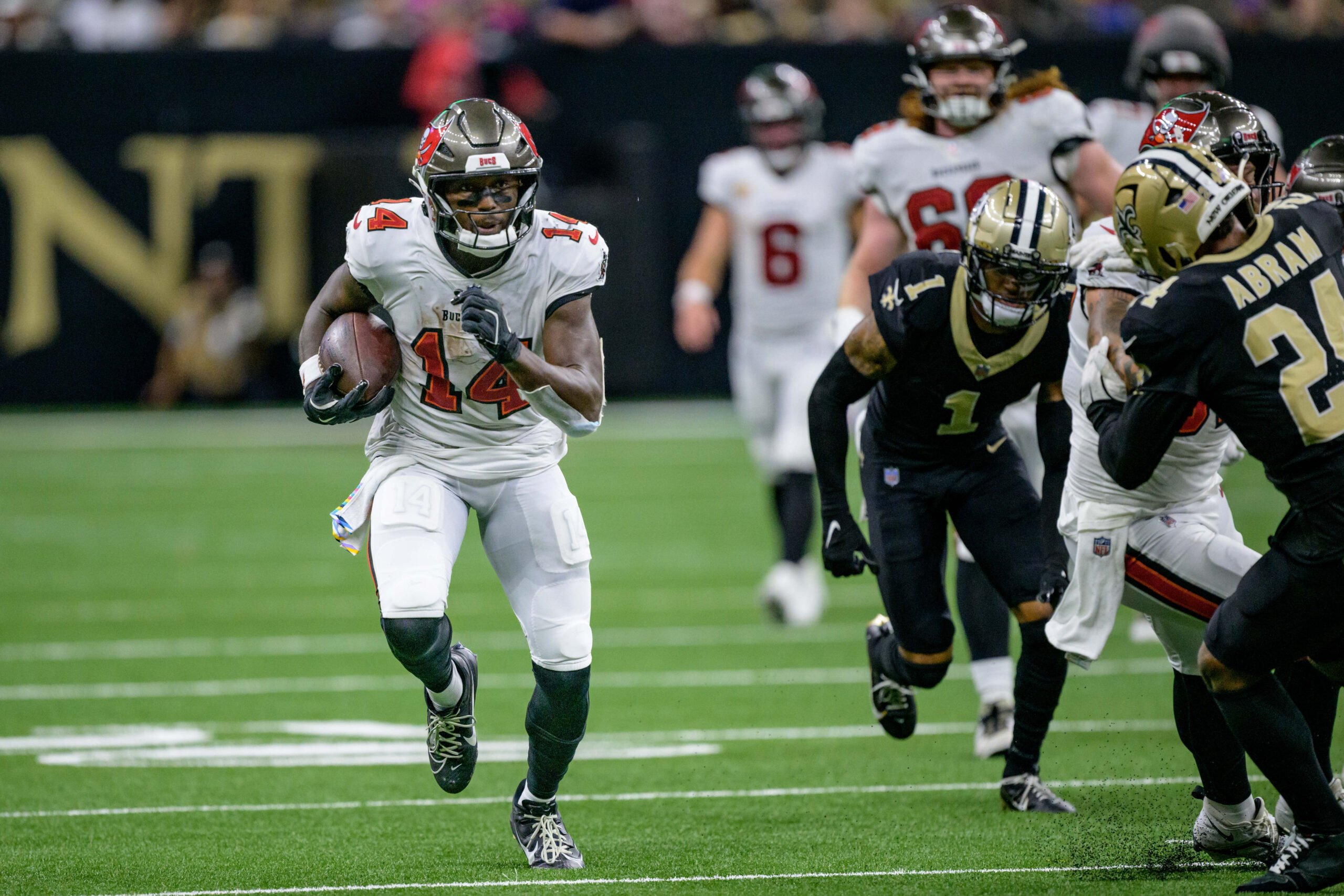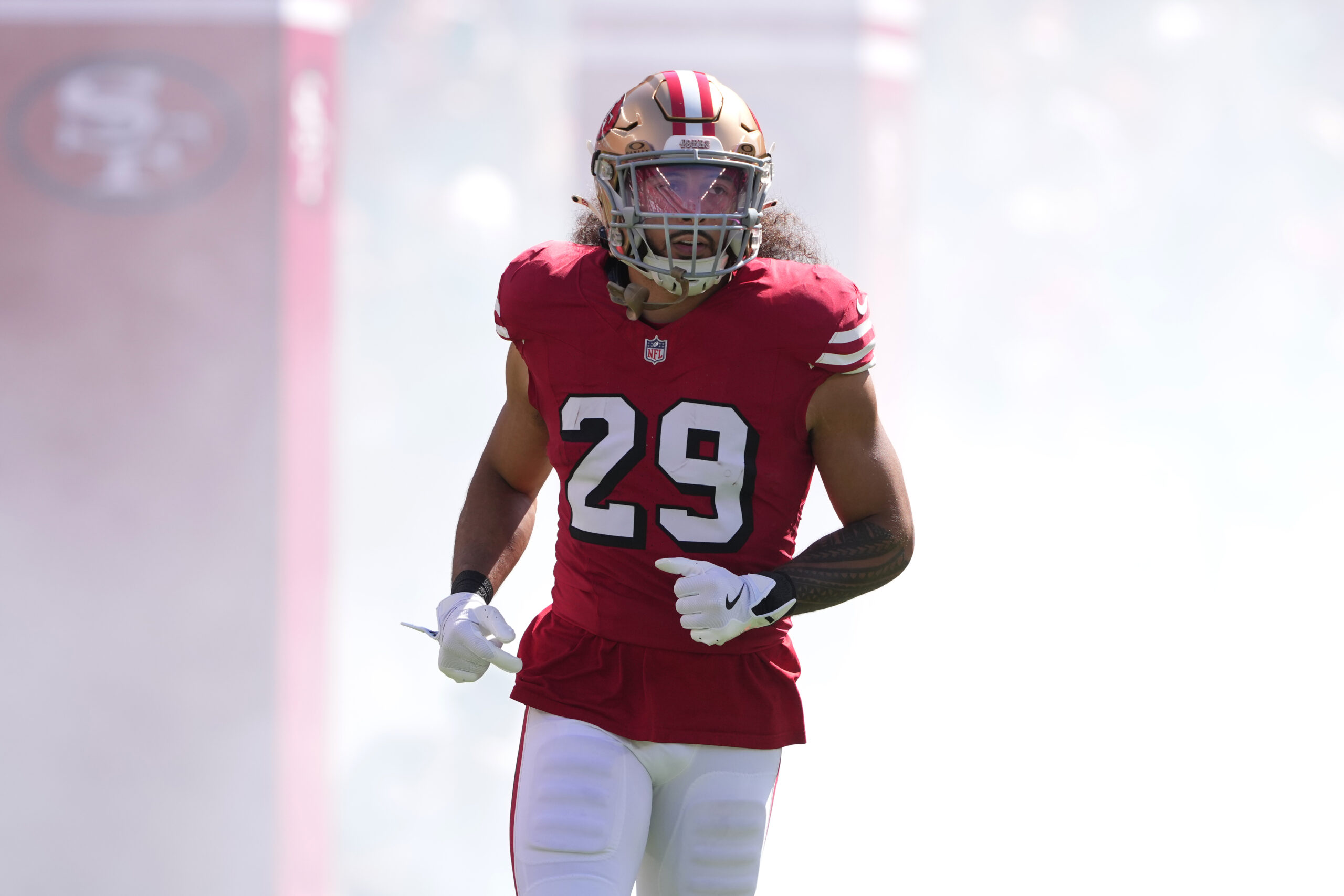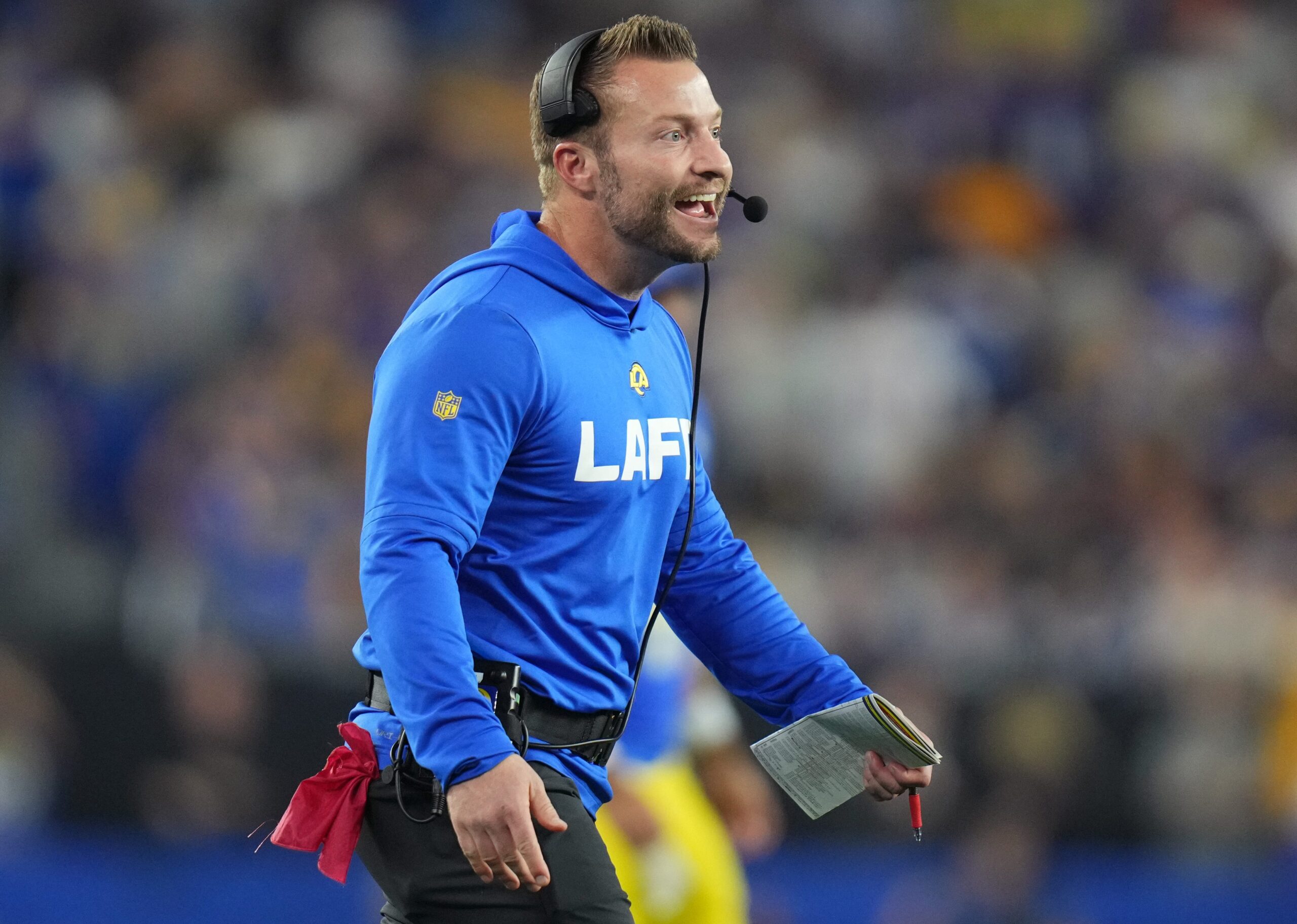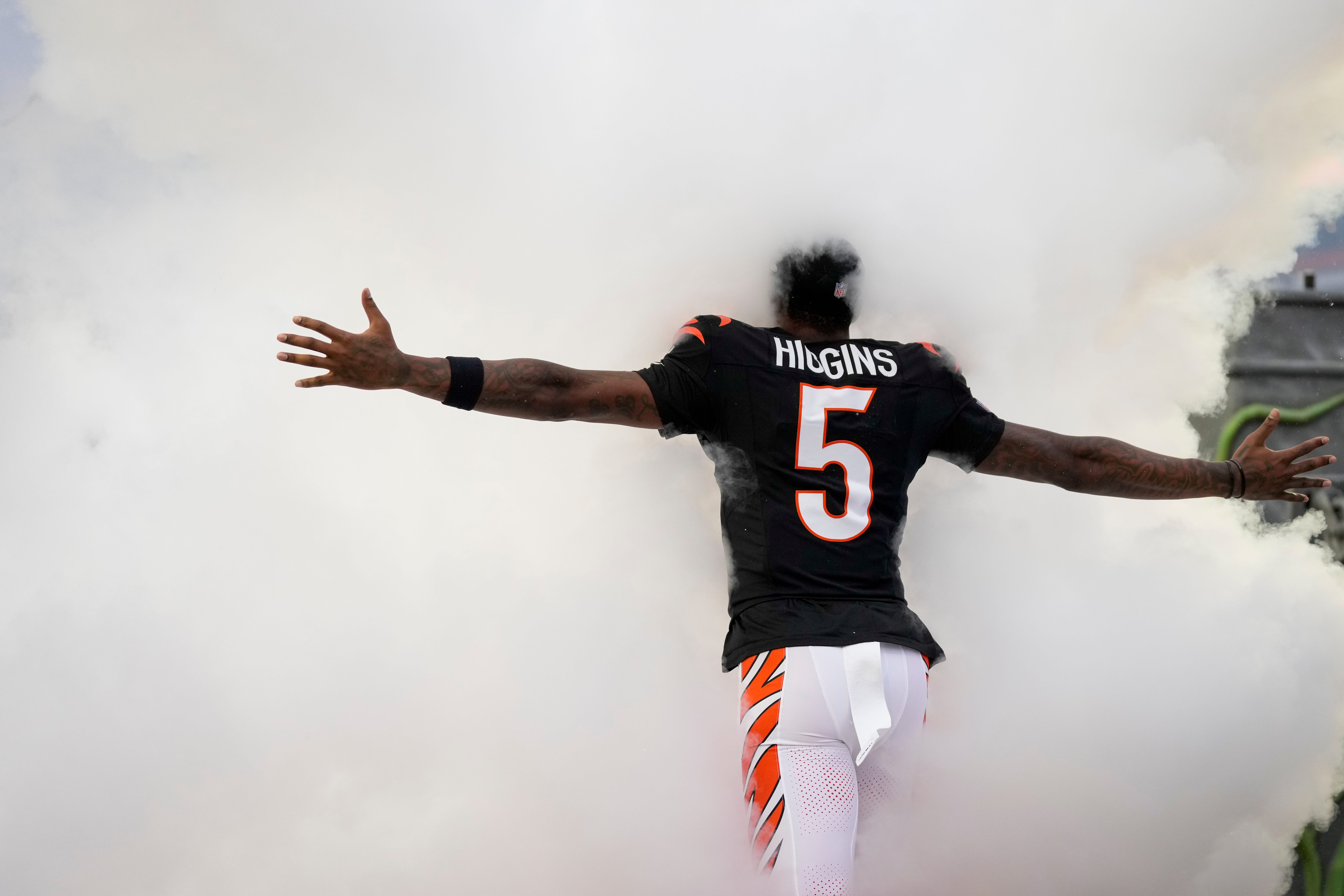NFL Analysis
9/4/24
21 min read
2024 NFL Week 1 QB Power Rankings: Stafford, Prescott Enter Top Tier
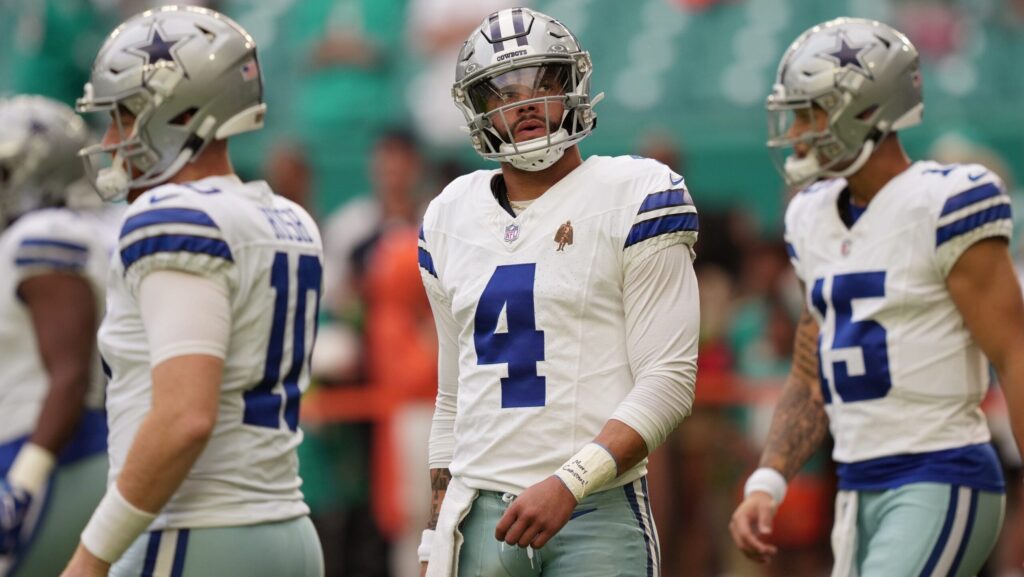
Everyone loves quarterback rankings. So here we are.
Each week, we’ll be ranking the league’s 32 starting quarterbacks. That means if a quarterback switch is made, it will be reflected in the rankings. Right now, Jacoby Brissett is ranked, and Drake Maye is not.
These rankings are based on a mixture of film, advanced stats, and cap hits. For the way we’re ranking quarterbacks this year, we will try to ask how much a quarterback plays into his team’s ability to win games.
Does the quarterback create the structure for the offense? Does he make the coach's job harder by having to scheme around him? Is he just a product of what surrounds him? These are the types of questions we’re trying to answer, and they will determine the order of this list.
For the first week of the season, the rookies will start at the bottom of the list because we have no baseline for their level of play. They’ll be the biggest movers over the first few weeks.
With that out of the way, let’s kick off the 2024 rankings.
All stats provided by TruMedia unless noted otherwise
NFL Week 1 QB Rankings
1. Patrick Mahomes, Kansas City Chiefs 
Patrick Mahomes makes everything easier for his offense. He has every tool in his bag, from finding and creating big plays to patiently picking through defenses underneath.
Mahomes has already evolved multiple times as a passer, and with more speed at receiver, we could be looking at another leap in his play.
2. Josh Allen, Buffalo Bills 
The Bills throw a ton on Josh Allen’s plate, and he’s been able to handle it. Sometimes, that has made Allen try to do too much, which has led to high interception rates that some harp on, but the positives far outweigh the negatives.
Last year, Allen had the highest success rate among quarterbacks on third down with the highest average depth of target.
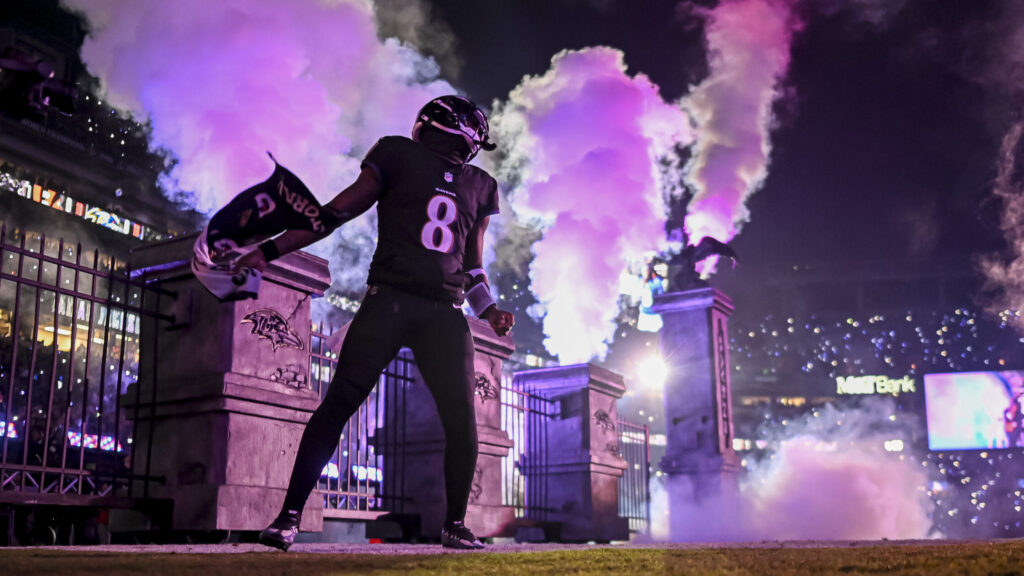
3. Lamar Jackson, Baltimore Ravens 
After his second MVP, there’s no more doubting the heights Lamar Jackson can lift an offense to when he’s on the field. Even if the numbers weren’t incredible — he was just seventh in EPA per play — Jackson still had command of an offense that allowed him to be a high-volume passer in the first year under offensive coordinator Todd Monken.
This was also done without much consistency among pass catches outside of rookie Zay Flowers. Flowers led the team with 108 targets from Jackson, while the next-highest Raven was Odell Beckham Jr. with 62.
Jackson’s presence will make things easier for Derrick Henry in the run game, while Jackson still presents danger when he runs.
4. Matthew Stafford, Los Angeles Rams 
Every throw is available to Matthew Stafford, and that has been unlocked since his trade to the Los Angeles Rams. Sean McVay has changed the offense a few times during the past three seasons, and Stafford’s capacity to open things up with his arm has been a driving force behind it.
In 2021, that was opening up the empty package that pushed things vertically. Last season, that was more straight dropback concepts, play-action off of more gap-scheme blocking, and quick-game passing out of the pistol.
Stafford was third in EPA per play among quarterbacks last season, something that does not get brought up enough. With his mental improvement and ability to manipulate spacing, Stafford belongs in the upper echelon of quarterbacks.
5. Dak Prescott, Dallas Cowboys 
Dak Prescott was the MVP favorite for much of the 2023 season, and rightly so, as he finished the year second in EPA per play. Few quarterbacks control the game more at the line of scrimmage before and after the snap, but Prescott also has the physical tools and accuracy to test tight windows.
Last year, Prescott had the highest completion percentage over expectation (+4.7 percent) while he threw into tight windows (a yard or fewer of separation, per Next Gen Stats) and the fourth-highest rate.
Testing tight coverage is typically something quarterbacks should try to avoid, but Prescott has the confidence and ability to test those small openings to every level of the field.
6. C.J. Stroud, Houston Texans 
In just one season, C.J. Stroud has already shown some Prescott-like tendencies. He can handle the pre- and post-snap responsibilities and push the ball down the field in the face of pressure.
No quarterback, other than Stroud, since at least 2000 recorded an average depth of target over 9.0 with an interception rate under 1.0 percent. Despite being one of the league’s best deep passers last season, his intermediate game (-4.7 percent CPOE per Next Gen Stats) is the place where he could improve the most.
Throwing Stroud up here already might be a bit of a projection, but the way he handled a rotating cast on the offensive line, some receiving weapons who were in and out of the lineup, and a nonexistent run game means there is a lot to like and build on in Year 2.
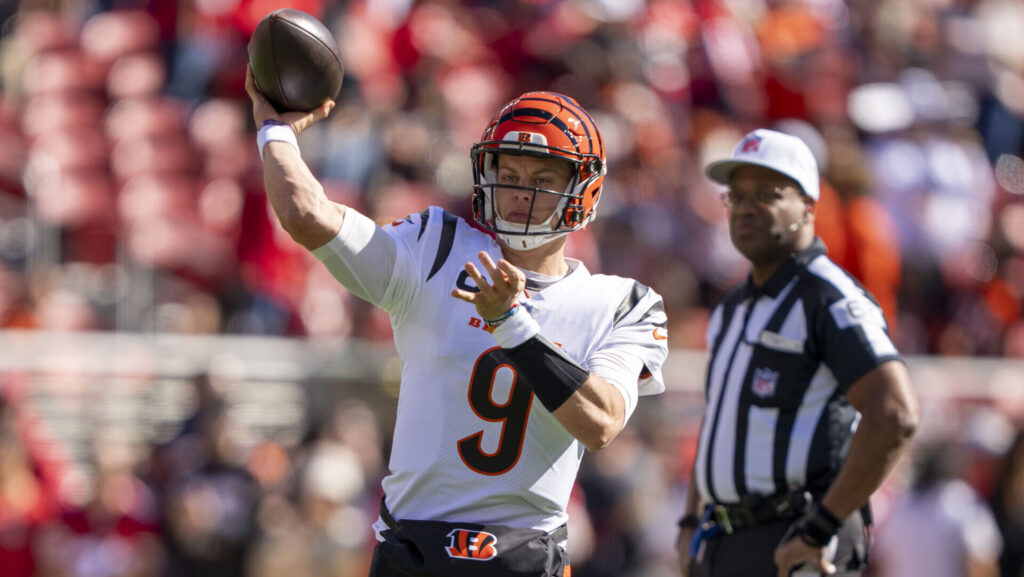
7. Joe Burrow, Cincinnati Bengals 
At his peak, Joe Burrow can be one of the NFL's most dangerous passers, picking apart defenses before and after the snap. He’s smart and accurate, rarely putting the offense in a harmful spot. But Burrow has not been that quarterback lately. He dealt with multiple injuries during the 2023 season that led to terrible efficiency (-0.05 EPA per play) and uneven play all around.
Without the physical tools that some other quarterbacks near the top of this list possess, Burrow needs his physicality to be at or near 100 percent for everything to work.
Cincinnati has morphed into a Burrow offense because of the quarterback's play style — though the Bengals could tie in some more of the effective 2023 Jake Browning offense — but that has not been a detriment to what the Bengals can accomplish on offense, especially with Ja’Marr Chase and Tee Higgins on the outside.
8. Justin Herbert, Los Angeles Chargers 
The ideal version of Justin Herbert is easily a top-five quarterback. While we want to see that, it hasn’t consistently been the version of Herbert that we get.
When things crumble around quarterbacks, some go into superhero mode and try to figure out the best way to make a big play. Others try to find a way to avoid negative plays and prevent further setting back the offense.
Herbert has frustratingly been more of the latter, while he has all the physical tools to be one of the former. The way he processes the game can occasionally get him to a check-down option more than an extended hunt for something out of structure.
Given the Chargers' receiving corps, it’s fair to wonder if we’ll see more of the overly safe play. That’s keeping him at the bottom part of the top 10. However, if he’s willing to rip it and try to make things happen, we could get that version we so badly want to see.
9. Jordan Love, Green Bay Packers 
We’ve seen one dominant half-season of play from Jordan Love, but it cannot be overstated how dominant it was. From Week 10 on, Love was third in EPA per play as the Packers figured out the best way to combine Love’s talents with the receivers and offensive scheme.
When Love settled down and stopped trying to force the ball so much, his big arm played much better and more accurately. The question will be if that comfortability will carry over for a full season. If it does, he’s set as a top-10 quarterback.
A lot has been made of Love getting the biggest quarterback deal after just one season as a starter, but that average salary comes from a $75.8 million cap hit in 2028. He’s on a very manageable $20.8 million cap hit this season.
10. Jalen Hurts, Philadelphia Eagles 
Even through ups and downs, Jalen Hurts has been a good and productive quarterback. He finished 2023 ninth in EPA per play and was just below average as things fell apart in Philadelphia during the second half of the season.
Hurts trusts his arm to go deep, which helps when the players catching passes down the sidelines are A.J. Brown and DeVonta Smith. His rushing ability, when healthy, also opens up more possibilities for the offense. Hurts could get by with those traits alone.
There are some inconsistencies in his game. Teams will blitz him often in an attempt to speed up his process. While he was second in CPOE to the intermediate level of the field, he doesn’t go there or see those throws consistently enough.
If Hurts can settle into a new offense with Kellen Moore, he could look closer to his 2022 level of play rather than what we saw as the team collapsed at the end of 2023.
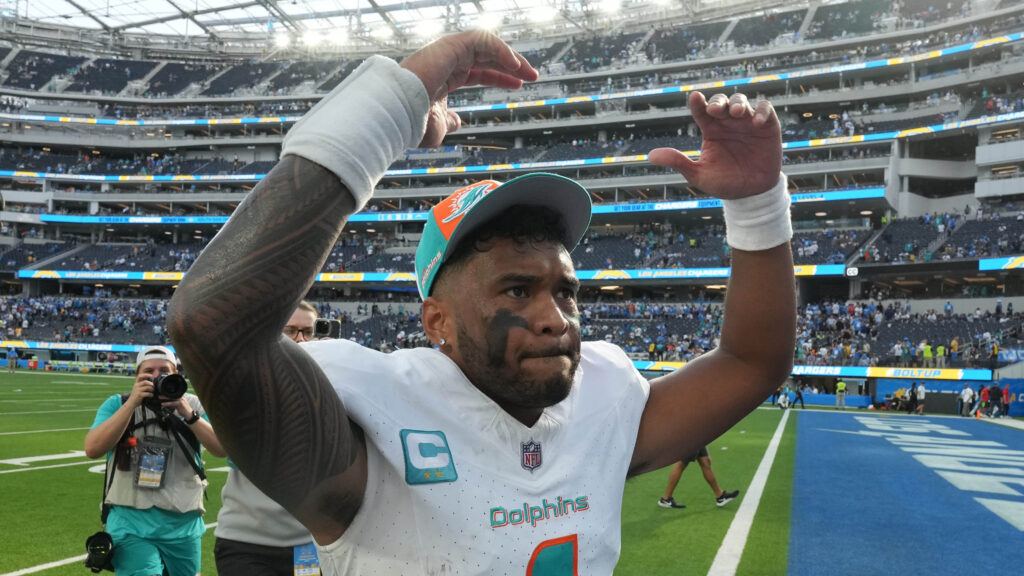
11. Tua Tagovailoa, Miami Dolphins 
It is the opinion of this column and these rankings that Tua Tagovailoa has as much to do with how the Miami scheme functions as the coach and wide receivers.
If a different quarterback with a slower release was placed on this team, we’d hear about the offensive issues well before December. Miami would be forced to improve the line, which would likely reduce the resources given elsewhere.
The out-of-structure play does need to improve — it’s the two-meter-wide opening in Miami’s Death Star — but some of those failings are because when pressure does blow up a play, it’s faster than any other team gets blown up. Miami averaged a league-leading 2.41 seconds to pressure on offense last season.
Tua does so much to help this offense move at the rate it does, so the pros still outweigh the cons.
12. Kyler Murray, Arizona Cardinals 
When Kyler Murray returned from his injury last season, there were some ups and downs.
Murray killed short-area passing but was rusty and inconsistent at the intermediate and deep levels of the field. Those have not been issues for Murray in the past, so we can assume that production gets better with a full offseason of work. He still finished the season 12th in EPA per play.
Murray can still run, and now he’ll get a full complement of big receivers to target, like Marvin Harrison Jr. and Trey McBride. With an explosive arm, the Cardinals could be on the verge of a big-play offense.
13. Trevor Lawrence, Jacksonville Jaguars 
Trevor Lawrence fits into the Herbert mold. We’ve seen his high level of play, so we project that to be his baseline, even though we just haven’t seen it often enough.
Part of the Jaguars’ offensive struggles stemmed from Lawrence being too good at getting the ball out quickly for his own good. Jacksonville defaulted to quick throws to hide their offensive line, which took away from Lawrence’s potential ceiling.
He’ll have to clean up the fumbles, which have been an issue, but if he gets some more time to throw while implementing some more play-action, he could have cleaner pockets to dig back into his plus physical traits to push the ball down the field.
14. Geno Smith, Seattle Seahawks 
Geno Smith might be the quarterback who rises up these rankings the quickest if things go right in Seattle. Last season, the Seahawks could not hold up in pass protection, and that often derailed the dropback game.
During his career, Smith has turned his pocket presence from a negative to a big plus — he had the fourth-lowest pressure-to-sack rate in 2023 — and he should be considered one of the NFL’s best deep passers.
If the offensive line can hold up and allow the Seahawks to fully embrace a Ryan Grubb offense, Smith could be in for a big 2024 season.
15. Aaron Rodgers, New York Jets 
It’s hard to place Aaron Rodgers in these rankings. He’s a 40-year-old quarterback coming off an Achilles tear. The last time we saw Rodgers, his mobility was already waning, and it became an issue. Rodgers was 30th in EPA per play from a clean pocket during the 2022 season.
Maybe Rodgers bounces back, and his chemistry with Garrett Wilson carries this offense, but that’s not the kind of quarterback we saw the last time he was healthy.
Until we see proof one way or the other, he’ll remain near the middle of these rankings.
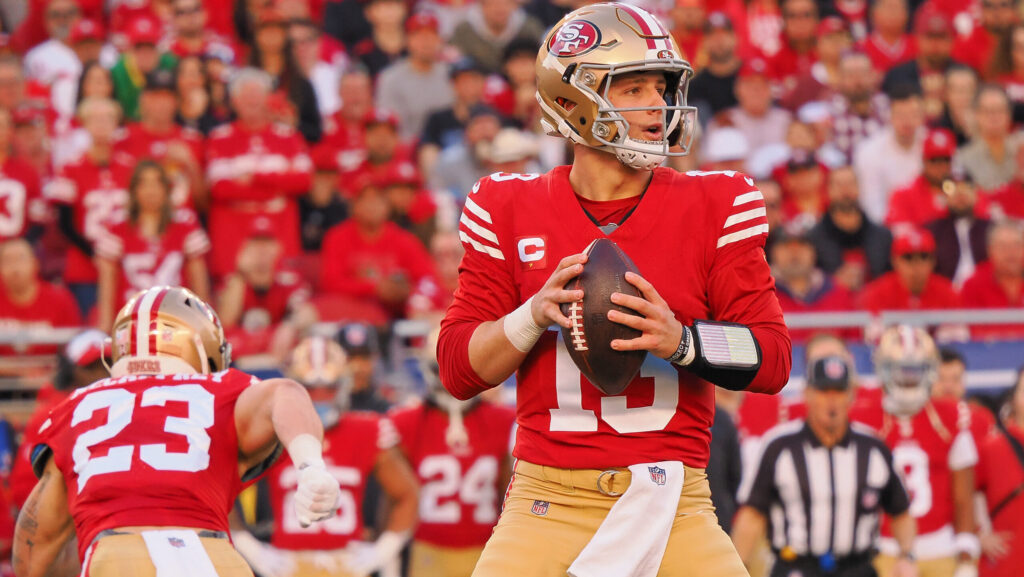
16. Brock Purdy, San Francisco 49ers 
Brock Purdy does things much better than other quarterbacks we’ve seen play under Kyle Shanahan. His out-of-structure play and willingness to throw deep sets him apart from the Jimmy Garroppolos of the world.
It’s also hard to ignore when Purdy is within this offense; it’s incredible. Purdy was far and away the most efficient quarterback by EPA per play last season, while the offense overall was one of the best we’ve seen in the modern game.
He should get credit for managing a poor offensive line, but Purdy can still put the ball in danger. However, he’s often bailed out by his playmakers. There is still more that aids Purdy in the offense than what he’s responsible for lifting himself.
17. Jared Goff, Detroit Lions 
Jared Goff is excellent at what he does: play-action and throwing over the middle of the field.
Detroit is the perfect place to get the most out of a player like this. The Lions have the league’s best offensive line, and their best two pass catchers — Amon-Ra St. Brown and Sam LaPorta — work the middle of the field at a rate that rivals the league's best.
Goff still has issues when under pressure because he's not a mobile quarterback. That said, it is much less of an issue behind this offensive line. He avoided sacks well but was 25th in CPOE under pressure last season.
18. Kirk Cousins, Atlanta Falcons 
Kirk Cousins was playing some of his best ball, even if some of the stats didn’t show it, before his midseason Achilles tear.
Since he was developing in the pocket, making better decisions in the mental part of the game, and never relying much on athleticism anyway, the Achilles injury might not take as much away from his game as we think.
But it’s still optimistic that a 36-year-old quarterback will feel no lingering effects.
19. Anthony Richardson, Indianapolis Colts 
Anthony Richardson ranks this high for his potential alone.
Although he only had 96 dropbacks as a rookie, there was a lot to like. Richardson proved he had the mental and physical makeup to manage a pocket, which was one of his most impressive traits, dating back to his college play.
He has a big arm and incredible mobility, which could make him a threat on nearly every play. There will be some accuracy inconsistency. Still, if the high-level traits click, there will be a wide margin for error that Richardson can account for with the plays he does make.
20. Baker Mayfield, Tampa Bay Buccaneers 
One of the most impressive things Baker Mayfield did last season was become more comfortable in the pocket. Earlier in his career, Mayfield would bail early before pressure truly became a threat. Last year, he had the eighth-highest rate of plays that came in the pocket.
We’ll have to see if that trait stays in Mayfield’s toolbox without Dave Canales. Mayfield was also incredible on third downs when he pushed the ball down the field. If both of those traits stick, Mayfield could be in for another productive season.
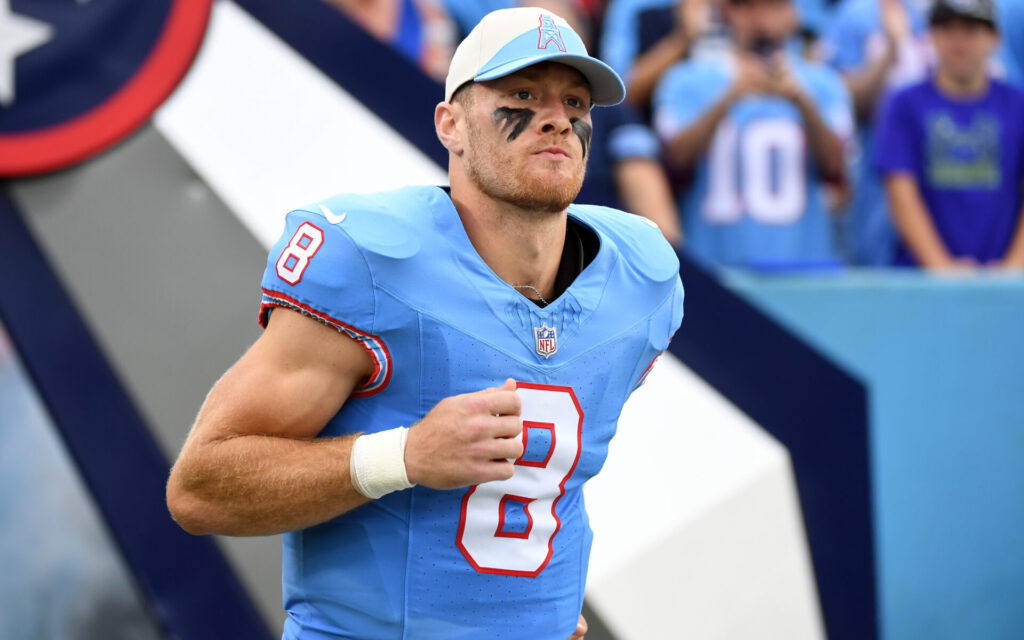
21. Will Levis, Tennessee Titans 
Will Levis is a mystery box quarterback. His best throws can be compared to quarterbacks much higher in these rankings, but his down-to-down consistency puts him down here.
His pocket presence might be his fatal flaw. Last season, Levis took a hit on over a quarter of his dropbacks, which was easily the highest rate in the league. Sometimes, that ends up as a cool throw with a defender in his face, but it’s often just the result of not feeling the pressure in the first place.
If an improved offensive line and receivers can help Levis get the ball out, the Titans could be onto something, but that could be a high bar to clear.
22. Derek Carr, New Orleans Saints 
Derek Carr is fine.
You know exactly what you’re getting with him behind center. He has that Herbert/Lawrence trait to try to limit negative plays for the offense, but it just doesn’t come with the good that outweighs that passive approach.
He was 30th in average depth of completion last season. It’s a tough way to sustain an offense, especially for one that doesn’t create a lot of spacing and yards after the catch. Perhaps that changes with Klint Kubiak as the offensive coordinator, but at 33 years old, Carr is the quarterback he always has been.
23. Jacoby Brissett, New England Patriots 
When Jacoby Brissett gets the chance to play, he is a capable quarterback. That’s what the Patriots are hoping for until Drake Maye is ready to take over.
Some of Brissett’s best strengths, such as his willingness to throw deep, probably won’t get that much use with the supporting cast in New England, especially behind that offensive line.
For just under $8 million on the cap this season, he’s a perfect bridge quarterback for the early part of the year.
24. Russell Wilson, Pittsburgh Steelers 
It was tough to watch Russell Wilson in Denver last season. He didn’t mesh with the offense and no player threw to running backs more often than Wilson.
The traits that made him special when he was younger, the mobility and beautiful deep ball, just aren’t there anymore. That’s compounded by some flaws like not being able to get to the middle of the field.
Only 45.5 percent of Wilson’s completions resulted in a first down or touchdown in 2023, which ranked 29th. His inconsistency overshadows how he’ll only cost the Steelers $1.2 million this season.
25. Bryce Young, Carolina Panthers 
Bryce Young was put in a terrible situation last season, but he did not do much to help himself. He’ll get better surroundings this season, though it’s unknown how much that will help. Based on what we saw last season, Young's ceiling could be much lower than what would be expected for a first-overall pick.
Young could not handle pressure last season, and that could be the first order of improvement for new coach Dave Canales. Getting Young more comfortable could be the key to getting the most out of a player this franchise invested so much in acquiring.
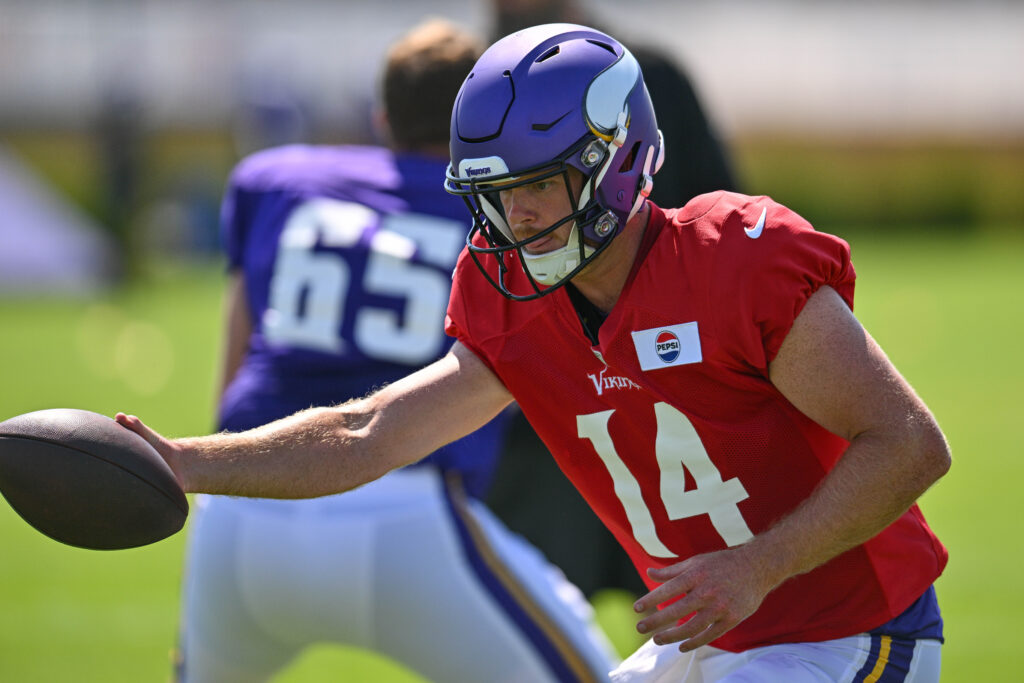
26. Sam Darnold, Minnesota Vikings 
There isn’t a lot to look back on with Sam Darnold’s track record to project high-quality play. His best stretches came in small samples, with the offense heavily tailored to make things as easy as possible.
While it’s possible that he’s in a situation that could bring out the best in him thanks to a great play-caller and the best receiver in the league, suggesting Darnold will be responsible for that production is a stretch.
He had one of the highest average depths of completion in the preseason, so getting open chunk plays could mask some of his poor decision-making, but that’s something we’ll have to see if it can be sustained across a full season.
27. Gardner Minshew, Las Vegas Raiders 
Gardner Minshew can be chaotic in a fun way, but building an offense around him takes a lot of work. Shane Steichen managed that with the Colts last season, as Indianapolis barely missed the playoffs, but it’s hard to see Minshew’s style of play taking off in Las Vegas.
Last season, 73.7 percent of Minshew’s passes were within 10 yards of the line of scrimmage, which ranked eighth-highest among quarterbacks (Aidan O’Connell was first at 74.9 percent).
If Minshew fully leaned into that and played safely, it could be passable, but his propensity to try things out of stricture far exceeds his physical ability to do so.
28. Daniel Jones, New York Giants 
As an actual quarterback, Daniel Jones could be a bit higher. But when a team refuses to restructure a contract and leaves him with the third-highest cap hit in the league at $47.9 million, so no more guaranteed money is put into future years, that’s not helping the franchise.
We’ve seen Jones play efficient football, but that 2022 season was bowling with bumpers. Jones was often put on bootlegs and was encouraged to run if the first read was not open. When he did throw, he had one of the lowest aDOTs in the league.
It has yet to be proven that the Giants can run a more traditional offense with Jones. The results were disastrous in the first half of 2023. Part of that is the offensive line, but Jones has also compounded that issue with not having a natural feel in the pocket.
29. Deshaun Watson, Cleveland Browns 
At no point during Deshaun Watson’s Cleveland tenure has he looked like an above-average quarterback. He’s lost confidence in the pocket, and he cannot create like he used to.
It’s to the point where players like Jacoby Brissett and Joe Flacco looked better in the offense.
To play to Watson’s hypothetical strengths, the Browns had to bring in Ken Dorsey to add more dropback passing to Kevin Stefanski’s playbook. That could be an awkward match that never fully meshes.
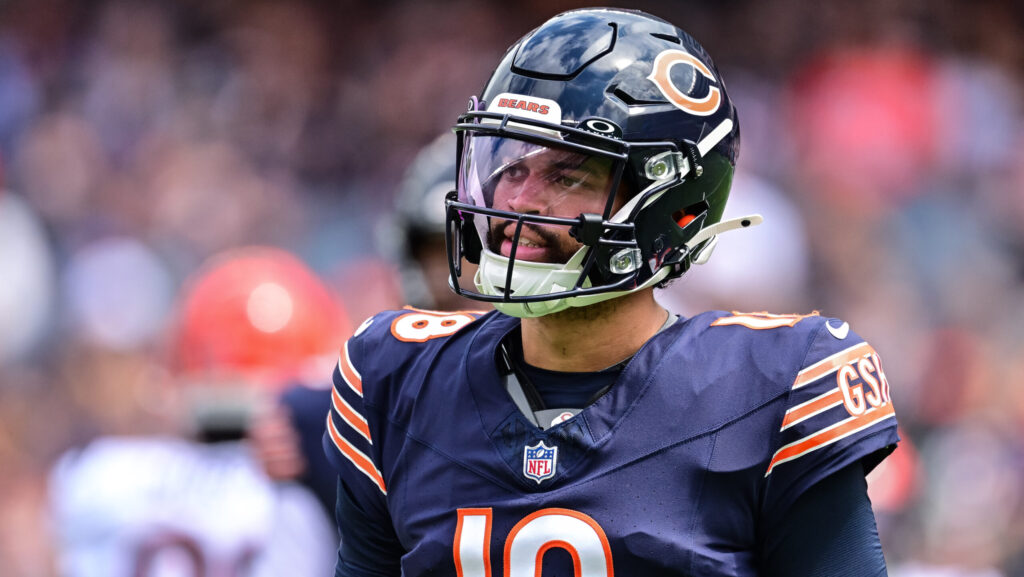
30. Caleb Williams, Chicago Bears 
In the preseason, we saw the flashes that made Caleb Williams a special prospect.
He has that creation gene that allows him to throw off awkward platforms and still accurately place the ball. What we’ll need to see is how well the Bears can stay in structure and how often Williams will need to create.
That balance will be key to his early development.
31. Jayden Daniels, Washington Commanders 
Jayden Daniels is fast and has a big arm. We’ve seen plenty of quarterbacks work with that. He had a nice deep throw in his preseason debut but was mostly limited to RPOs and screens after that.
Once the regular season starts, we’ll see what the full Daniels-Kliff Kingsbury offense looks like. The concerns will be whether the Kingsbury offense is as static as it was in Arizona and whether Daniels can avoid hits when he tries to make a play.
32. Bo Nix, Denver Broncos 
Bo Nix is a bit like Minshew, though he has a better understanding of what he is and will be hyper-accurate on those shorter throws.
He also has more control over his mobility to be less chaotic. In his first preseason game, he was all over the place with off-platform throws when they weren’t necessary, but he settled down in the following games.
How comfortably he plays in the pocket will be the key to how much the Broncos can build the offense out of his short-area accuracy.


